Best regional Australian towns to retire to in 2022
Regional Australia is experiencing its biggest migration in four decades. Here are the best towns to consider if you’re planning a sea or tree change.
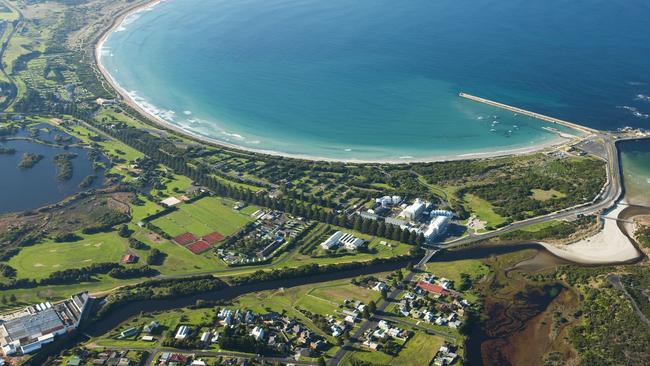
After 40 years, the lure of the big smoke seems to have finally waned.
For the first time since 1981, the country’s regional population grew more than their urban counterparts according to data from the 2021 census, with more than 70,000 people swapping the city for smaller coastal or country towns.
It shouldn’t come as a shock, given the seismic, pandemic-induced shift of 2020-21 which turned the standard workday on its head.
Add the rising costs of living, the return of commuter congestion and a general lack of space, and the appeal of a slower, less cramped lifestyle holds a lot of appeal.
“A lot of the drivers for people who are looking to downsize to regional centres or to towns rather than the big city are to do with things like traffic, air pollution and quality of life and that sense of community,” says Dr Michael Fotheringham, managing director of the Australian Housing and Urban Research Institute.
A 2020 survey by the Regional Australia Institute showed that about 20 per cent of metro-based people were considering moving regionally within the next three years, with half having considered a move even before the start of the Covid pandemic.
While affordability is still a factor, the cost of housing in smaller towns is increasing in line with the influx of working-age Australians into regional districts.
“Historically there has been a benefit of moving from the big city to a smaller town in terms of price … but at the moment the vacancy rates and availability of housing in regional centres is much tighter than it has been historically,” Dr Fotheringham explains.
“If you’re looking to get a big lump sum payment, the cash benefit is less than it might have been a few years ago because of the changing markets.”
This might not sound like good news for retirees, but Dr Fotheringham adds that having a broad age of residents is crucial for regional communities to thrive.
“The sleepy hollow notion that that’s where people go to retire can actually be harmful to the productivity of a centre,” he says. “You need young people working in cafes, hospitality, and aged care for that matter – across all the services that we all need, regardless of city size.
“A lot of regional centres are really focused on how they build up employment and make their city attractive to employees and young families, because you need that mixture, because you can’t just have a retirement village as a city.”
When looking to downsize – whether you’re an empty nester, looking for a slower pace of life or simply wanting to experience life in one of Australia’s beautiful coastal or regional towns – there are a few things to consider.
Proximity to a capital city, access to amenities including hospitals and schools, reliable transport and lifestyle suitability are some of the most important considerations to make before choosing the perfect town in which to downsize.
Ready to make the move? We’ve rounded up some of Australia’s best small towns to consider.
Queensland
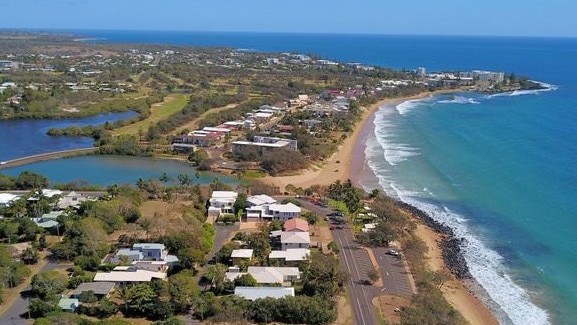
Bargara
With its proximity to the town of Bundaberg and the natural wonders of North Queensland, it’s not hard to see why this coastal village is a downsizer’s dream.
There are plenty of food options; you’ll find a good selection of plant-based fare at Journey Café and you can’t beat brunch at the Windmill Café, both a short stroll to the town’s winding seaside esplanade.
If you’re into perennial warmth, rum and regular island-hopping (Fraser, Lady Musgrave and Lady Elliott island are just off the coast), it’s definitely a contender.
Population (as of most recent census): 9867
Median house price: $468,000
Distance to nearest city: 4 hr 20 mins (362.1 km) to Brisbane and 13 km to Bundaberg
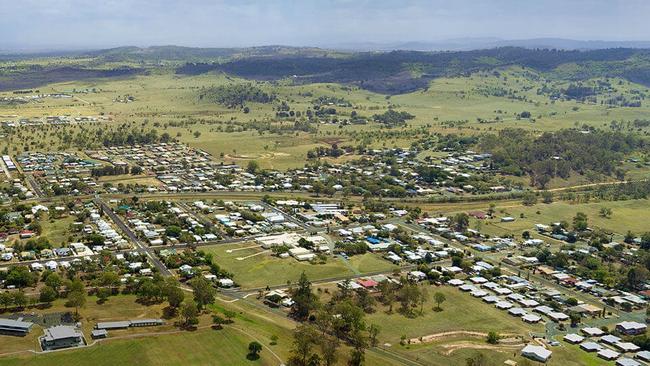
Laidley
Just a short drive West from Brisbane, nestled in the scenic Lockyer Valley you’ll find the historic, picturesque town of Laidley.
Known for its friendly, laid-back charm, Fridays in Laidley are usually buzzing with visitors browsing the fresh produce and knick-knacks on offer at its weekly village market. Located just over an hour from Brisbane, it’s an easy commute for those looking for a slower-paced lifestyle and affordable housing, while still being close to a major city.
Population (as of most recent census): 3883
Median house price: $325,000
Distance to nearest city: 1 hr 15 mins (83.2 km) from Brisbane
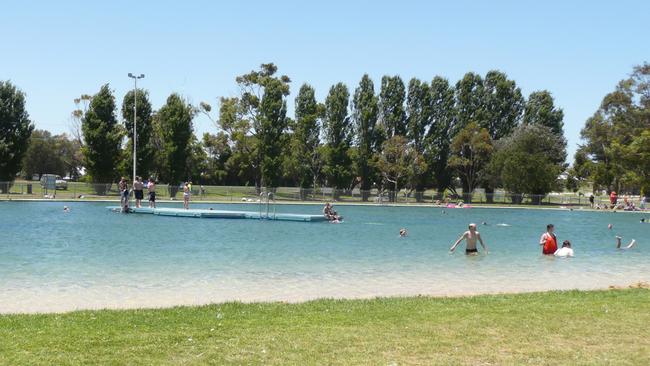
Millicent
Almost smack bang between Adelaide and Melbourne and hugging South Australia’s Limestone Coast, you’ll find the township of Millicent. Named after Millicent Glen, the daughter of Adelaide’s first Anglican bishop, the town’s historical charm and proximity to Canunda National Park has made it a popular place to settle for both young families and retirees alike.
It may be quite a drive to the nearest major city, but you’re also only 50km from Mount Gambier which offers all the amenities you need, including a regional airport and multiple shopping centres.
Population (as of most recent census): 4761
Median house price: $269,000
Distance to nearest city: 50 km from Mount Gambier
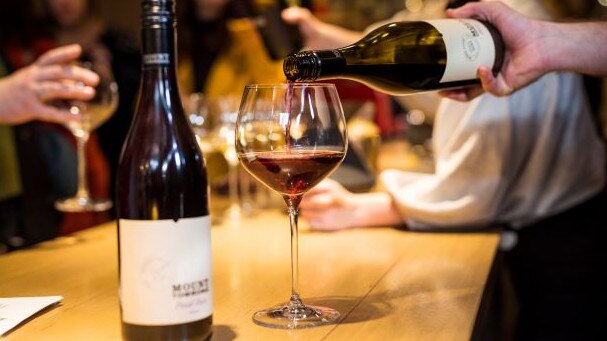
Angaston
If you love a gutsy shiraz and a weekend cycling session (hopefully, not at the same time), Angaston may fulfil all your downsizing dreams.
Situated in the famous Barossa region, the town is surrounded by vineyards and some of the country’s most celebrated cellar doors including Penfold’s, Henshke and Yalumba.
But with the myriad wine and food festivals held throughout the year, you’ll need a property with more than one guest bedroom to accommodate all those vying for an invitation to stay.
Population (as of most recent census): 2202
Median house price: $422,500
Distance to nearest city: 1 hr 9 mins (88.4 km) to Adelaide
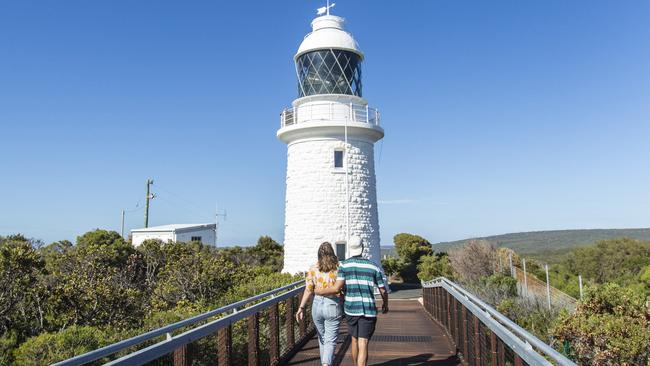
Dunsborough
With more affordable house prices than neighbouring towns like Yallingup, this Margaret River village is quickly becoming a destination for those seeking a relaxed beachside lifestyle.
Financially, now is a good time to put some roots down in Dunsborough. Its desirability among young families and downsizers has led to a population boom with resident numbers set to more than double over the next decade.
The popular tourist town also has a thriving hospitality scene, too, with fine dining options such as Yarri and Blue Manna and brunch spots galore.
Population (as of most recent census): 6413
Median house price: $765,000
Distance to nearest city: 2 hr 45 mins (247.4 km) to Perth
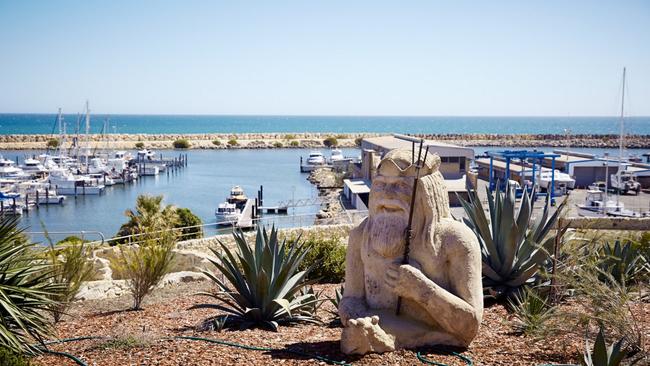
Two Rocks
This beachside town is so close to Perth – just a 50-minute drive south to the CBD, that it’s technically a northern suburb of the state’s capital.
It’s easy to know when you’ve arrived in Two Rocks, a 10m tall limestone statue of a grinning King Neptune presides on a hill overlooking the town: a relic of Alan Bond’s short-lived Atlantis Marine Park development.
Perth’s northern sprawl is expected to increase Two Rocks’ population significantly over the next two decades, which will eventually lead to an increase in amenities and infrastructure in the area and demand for properties. If you’re looking for an affordable downsizing option with potential, this coastal ‘burb could be the place.
Population (as of most recent census): 3822
Median house price: $448,000
Distance to nearest city: 50 mins (61km) to Perth
New South Wales
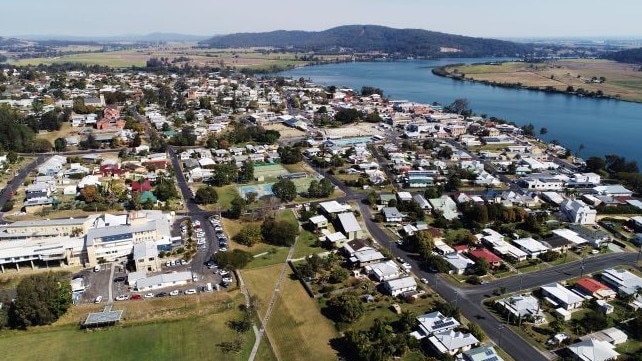
Maclean
With its tartan-painted power poles and Gaelic street signs it’s impossible to ignore the Scottish heritage of Maclean, a town hugging the Clarence River in Northern NSW.
You’ll find this riverside settlement offers plenty more than haggis and bagpipes, though, including great fishing spots and a thriving café and art gallery scene.
It’s also a short drive to surfer’s favourite Angourie Beach and the South-facing (and more swimmer-friendly) Back Beach. Low lying areas of the town were affected by the recent floods, so it would
Population (as of most recent census): 2778
Median house price: $650,000
Distance to nearest city: 2hr 50 min (220km) to Brisbane
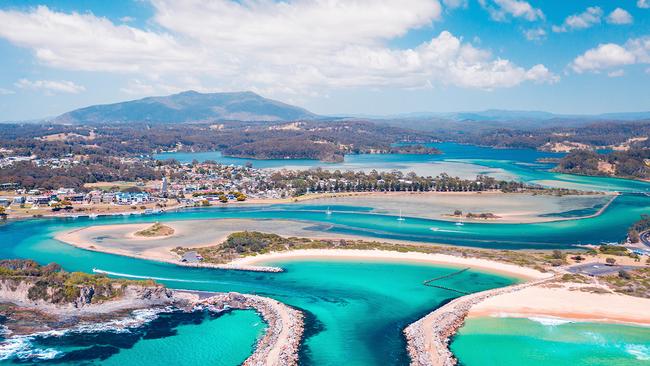
Narooma
Narooma is quickly becoming a must-visit destination for foodies, thanks to the recent arrival of Merivale eateries Queen Chow, The Inlet and Quarterdeck.
Fortunately the place still retains its laid-back vibe and stunning coastal scenery,
Buying a property in Narooma might not be as affordable as other towns along the far south coast, but if 2021 census statistics are anything to go by, demand for property will stay strong, with its population jumping by almost 25 per cent since 2016.
Population (as of most recent census): 2731
Median house price: $749,000
Distance to nearest city: 3 hr 4 min (224.8 km) to Canberra
Victoria
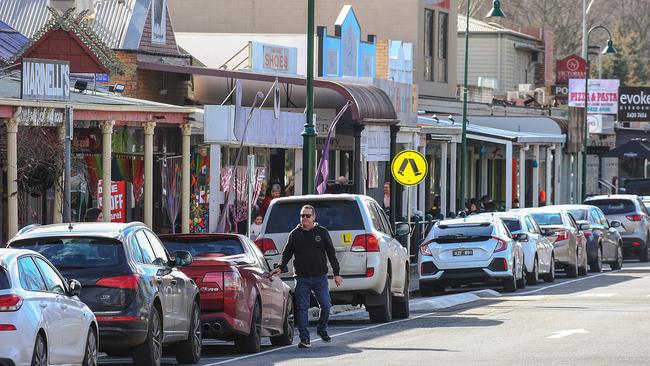
Gisborne
Located less than an hour northwest of Melbourne is the 160-year-old town of Gisborne in Victoria’s Macedon Ranges.
A popular weekend destination for Melburnians thanks to its myriad wineries, lush gardens and farm gates, this small town feels a world away from the city despite its relative proximity to Melbourne’s CBD. It’s also just a short drive to the beautiful spa town of Daylesford and the infamous ‘Hanging Rock’, and is also the location of the latest season of Channel 9’s The Block.
The median house price is reflective of its convenience however, so those looking to downsize the mortgage might want to consider towns such as Kyneton or Castlemaine, located further inland.
Population (as of most recent census): 10142
Median house price: $1.1 million
Distance to nearest city: 45 min (55km) to Melbourne
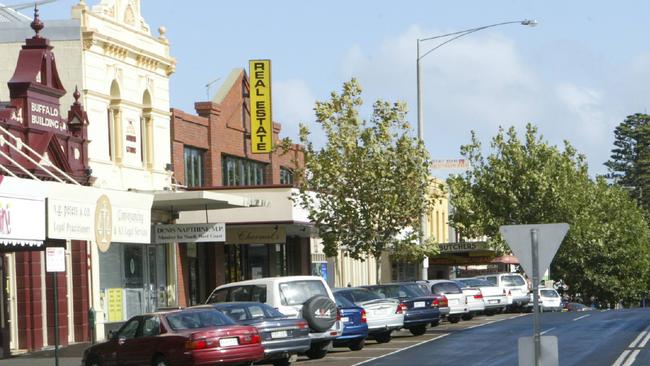
Warrnambool
Located along the Great Ocean Road is Warrnambool, Victoria’s largest coastal town. If you’re looking for an affordable coastal option, this large town ticks a lot of boxes.
It’s close to some of Victoria’s most beautiful seaside locales including Port Fairy, as well as the scenic landmarks of the Great Ocean Road, namely the crumbling, coastal wonder of the Twelve Apostles.
There’s also a reliable train service to Melbourne, plenty of dining options and all the essential public amenities you might need.
Population (as of most recent census): 31308
Median house price: $600,000
Distance to nearest city: 3.1 hours (257km) to Melbourne


To join the conversation, please log in. Don't have an account? Register
Join the conversation, you are commenting as Logout